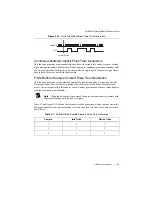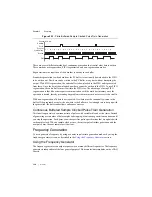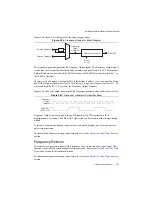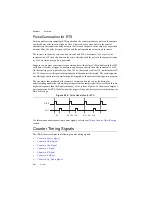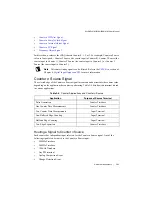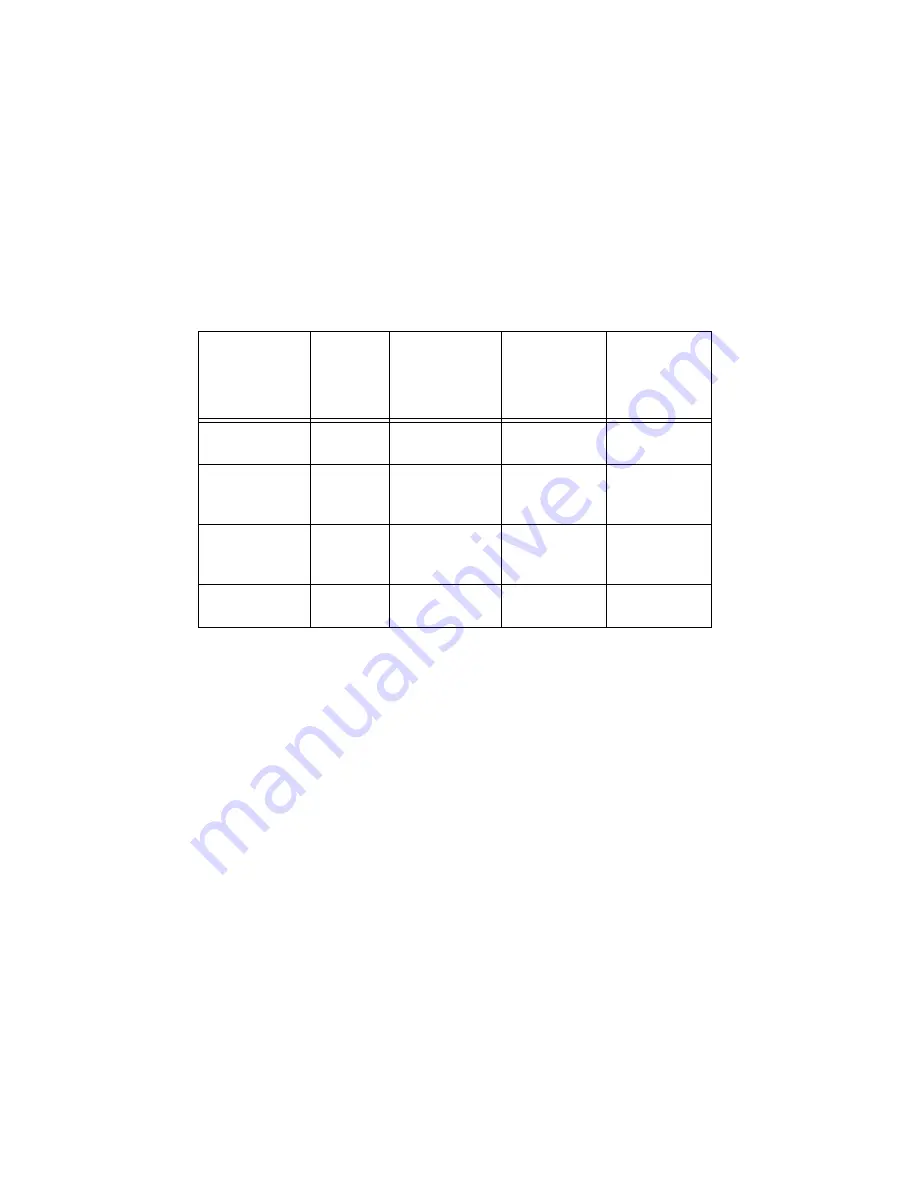
5-18
|
ni.com
Chapter 5
Counters
•
Measuring a large range of frequencies with two counters measures high and low frequency
signals accurately. However, it requires two counters, and it has a variable sample time and
variable error % dependent on the input signal.
Table 5-5 summarizes some of the differences in methods of measuring frequency.
For information about connecting counter signals, refer to the
section.
Period Measurement
In period measurements, the counter measures a period on its Gate input signal after the counter
is armed. You can configure the counter to measure the period between two rising edges or
two falling edges of the Gate input signal.
You can route an internal or external periodic clock signal (with a known period) to the Source
input of the counter. The counter counts the number of rising (or falling) edges occurring on the
Source input between the two active edges of the Gate signal.
You can calculate the period of the Gate input by multiplying the period of the Source signal by
the number of edges returned by the counter.
Period measurements return the inverse results of frequency measurements. Refer to the
Table 5-5.
Frequency Measurement Method Comparison
Method
Number
of
Counters
Used
Number of
Measurements
Returned
Measures
High
Frequency
Signals
Accurately
Measures Low
Frequency
Signals
Accurately
Low frequency
with one counter
1
1
Poor
Good
High frequency
with two
counters
1 or 2
1
Good
Poor
Large range of
frequencies with
two counters
2
1
Good
Good
Sample clocked
(averaged)
1
1
Good
Good


























